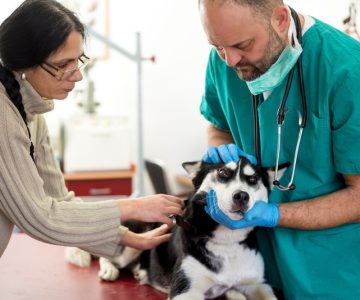What Are the Early Signs of Cancer in Dogs and Cats?
It can be concerning when our furry friends aren’t behaving like their usual selves. As responsible pet parents, being aware of troubling signs is crucial, especially regarding serious health issues like cancer. It’s never easy to consider, but knowing about early cancer warning signs in dogs and cats can make a difference. Let’s discuss these telltale clues and the steps to take if you suspect something’s amiss.
Early Manifestations of Pet Cancer
Cancer in pets can be as unpredictable and varied as it is in humans. It’s not always dramatic or demonstrative; sometimes, the signs are subtle. Knowing what to look for can help you catch cancer early, which is vital for treatment and management. Here’s a detailed rundown of the early warnings that might point to cancer in your precious pet:
1. Unexplained Weight Loss or Gain
-
Sudden slimming: If your pet begins to lose weight unexpectedly, it could be an internal signal that something’s off.
-
Mysterious weight gain: On the flip side, unexplained weight gain can also be problematic and warrants a vet check-up.
-
No diet changes: These weight changes are particularly alarming if you still need to alter your pet’s diet or exercise regimen.
2. Persistent Sores or Skin Changes
-
Non-healing wounds: If you find sores that don’t seem to heal, it’s time for professional input.
-
Abnormal skin growths: Any new moles or lesions could be benign but should be evaluated.
-
Changes in color or texture: Skin that thickens, changes color, or loses hair might be symptomatic of an underlying problem.
It’s important to remember that not all skin issues are cancerous. Many dogs and cats suffer from allergies and dermatological conditions that can mimic the symptoms of cancer. Consulting with a dermatologist at Cumberland Animal Hospital can aid in distinguishing between the two and ensure proper treatment.
3. Changes in Eating Habits
-
Loss of appetite: A once-voracious eater turning up their nose at mealtime isn’t a good sign.
-
Difficulty eating: Struggling to eat or discomfort while chewing can indicate mouth-related issues, like oral tumors.
-
Sudden pickiness: A new picky eater or a drastic drop in appetite could be a symptom of gastrointestinal malignancies.
4. Behavioral Changes
-
Unusual lethargy: If Spot sleeps more than usual or Fluffy isn’t up for play, take note.
-
Unexpected aggression: Pain or discomfort from cancer may cause uncharacteristic snappishness.
-
Withdrawal: A once sociable pet preferring solitude could face more than a bad mood.
5. Bumps and Lumps
-
Shock of discovery: Finding a lump can be startling, but keeping a level head is critical for the next steps.
-
Lumps aren’t always cancer: Not all growths spell doom, but they all deserve a vet’s expert eye.
-
Growth tracking: Monitoring any lumps for size, shape, or color changes is important.
6. Abnormal Discharges and Odors
-
Bloody or pus discharges: These symptoms should never be ignored and can indicate a deeper issue.
-
Unexpected smells: Foul odors, especially from the mouth, can signify oral cancers or tumors elsewhere.
-
Nose bleeds or discharge: If you’re cleaning up more sneezes filled with blood or unusual mucus, it’s time for a vet trip.
Remember, while these signs can be suggestive of cancer, they could also stem from other illnesses or conditions. If you notice these symptoms, the best action is to consult your vet. So you’ve spotted one or more of these signs, what’s next? Seeking dog oncologist services in Lebanon is a proactive step.
Steps to Take If You Spot the Signs
If you notice any of these early signs of cancer in your pet, here are some steps you can take:
-
Don’t panic: Staying calm and clearly approaching the situation is vital.
-
Document everything: Record the symptoms and changes in your pet’s behavior or appearance.
-
Visit your vet: Schedule a check-up to discuss your concerns and explore further diagnostic tests.
-
Follow professional advice: Trust your vet’s expertise and follow the recommended tests or treatments.
Improving Your Pet’s Quality of Life with Early Detection
Catching cancer early can significantly improve the quality of life for your dog or cat. Early detection typically results in more effective treatment and a better prognosis. So, it’s not just about prolonging their life, but also about improving the time they have left, ensuring it’s comfortable and full of love.
Remember, you are your pet’s best advocate. By being vigilant and responsive to the early signs of cancer, you help give them the most excellent chance at a long and healthy life. You can visit website and read blog posts and articles about it for more information.
Final Thoughts
Providing the best care for our dogs and cats means being aware of the early signs of cancer and knowing when to seek veterinary advice. While the possibility is scary, early intervention is critical. Maintain regular veterinary check-ups, stay informed, and always watch for the abovementioned changes. With knowledge and prompt action, we can all be better guardians for our four-legged family members.





